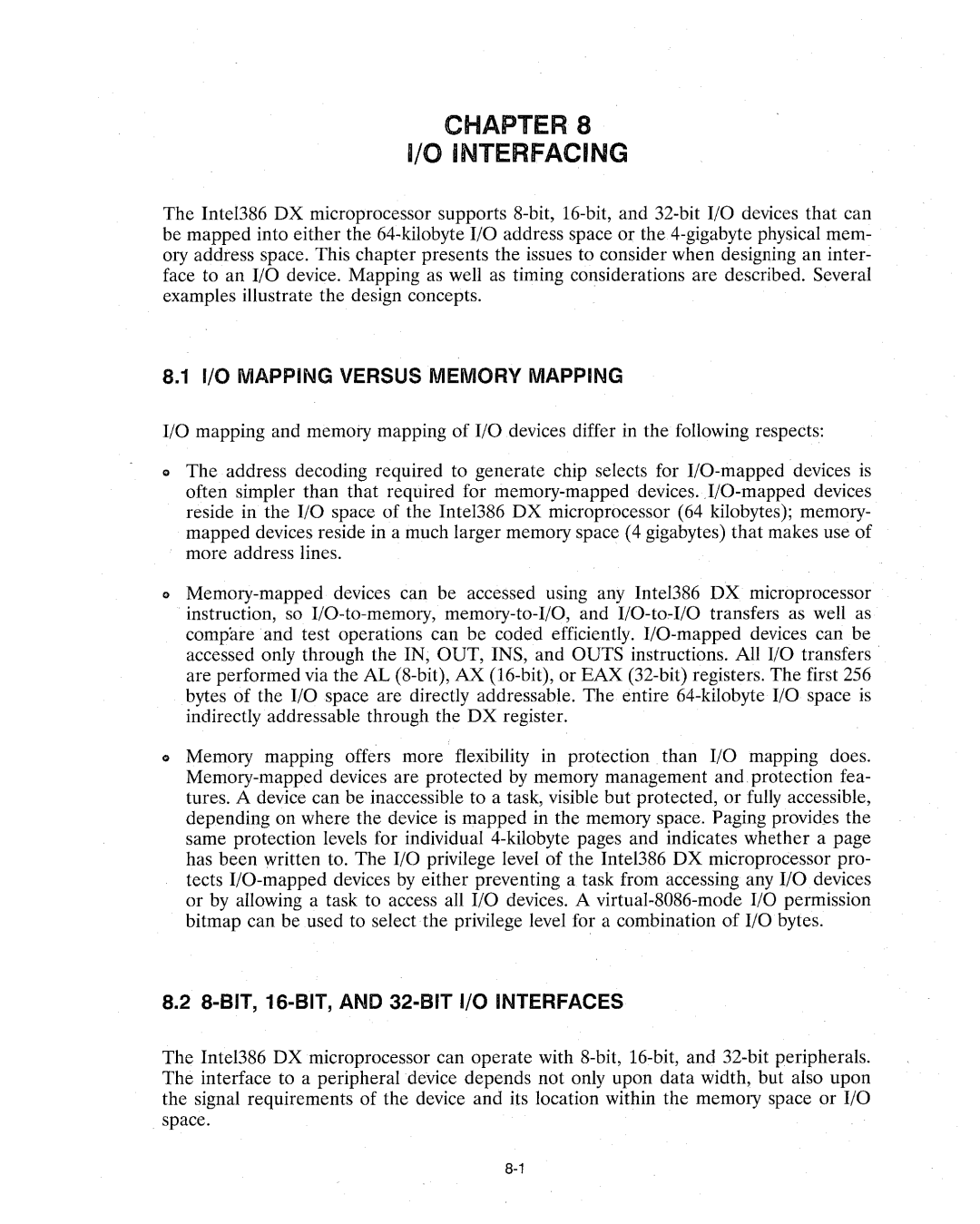CHAPTERS
I/O INTERFACING
The Intel386 DX microprocessor supports 8-bit, 16-bit, and 32-bit I/O devices that can be mapped into either the 64-kilobyte I/O address space or the 4-gigabyte physical mem- ory address space. This chapter presents the issues to consider when designing an inter- face to an I/O device. Mapping as well as timing considerations are described. Several
examples illustrate the design concepts. | . |
8.1 I/O MAPPING VERSUS MEMORY MAPPING
I/O mapping and memory mapping of I/O devices differ in the following respects:
011The address decoding required to generate chip selects for I/O-mapped' devices is often simpler than that required for memory-mapped devices. J/O-mapped devices reside in the I/O space of the Inte1386 DX microprocessor (64 kilobytes); memory- mapped devices reside in a much larger memory space (4 gigabytes) that makes use of more address lines.
OIl Memory-mapped devices can be accessed using any Intel386 DX microprocessor instruction, so I/O-to-memory, memory-to-I/O, and I/O-tocI/O transfers as well as compare and test operations can be coded efficiently. I/O-mapped devices can be accessed only through the IN, OUT, INS, and OUTS instructions. All I/O transfers' are performed via the AL (8-bit), AX (16-bit), or EAX (32-bit) registers. The first 256 bytes of the I/O space are directly addressable. The entire 64-kilobyte I/O space is indirectIyaddressable through the DX register.
•Memory mapping offers more flexibility in protection than I/O mapping does. Memory-mapped devices are protected by memory management and protection fea- tures. A device can be inaccessible to a task, visible but protected, or fully accessible, depending on where the device is mapped in the memory space. Paging provides the same protection levels for individual 4-kilobyte pages and indicates whether a page has been written to. The I/O privilege level of the Inte1386 DX microprocessor pro- tects I/O-mapped devices by either preventing a task from accessing any I/O devices or by allowing a task to access all I/O devices. A virtual-8086-mode I/O permission bitmap can be used to selectthe privilege level for a combination of I/O bytes.
8.28-BIT, 16-BIT, AND 32-BIT I/O INTERFACES
The Inte1386 DX microprocessor can operate with 8-bit, 16-bit, and 32-bit peripherals. The interface to a peripheral device depends not only upon data width, but also upon the signal requirements of the device and its location within the memory space or I/O
, space.

